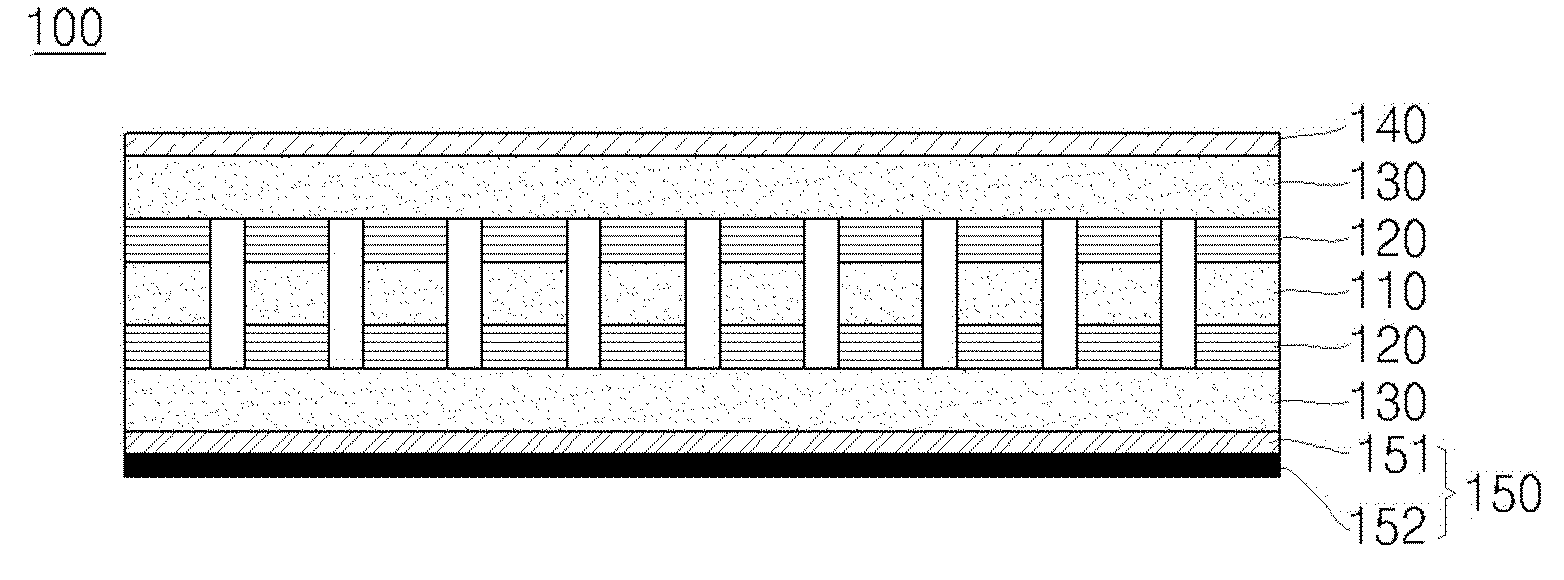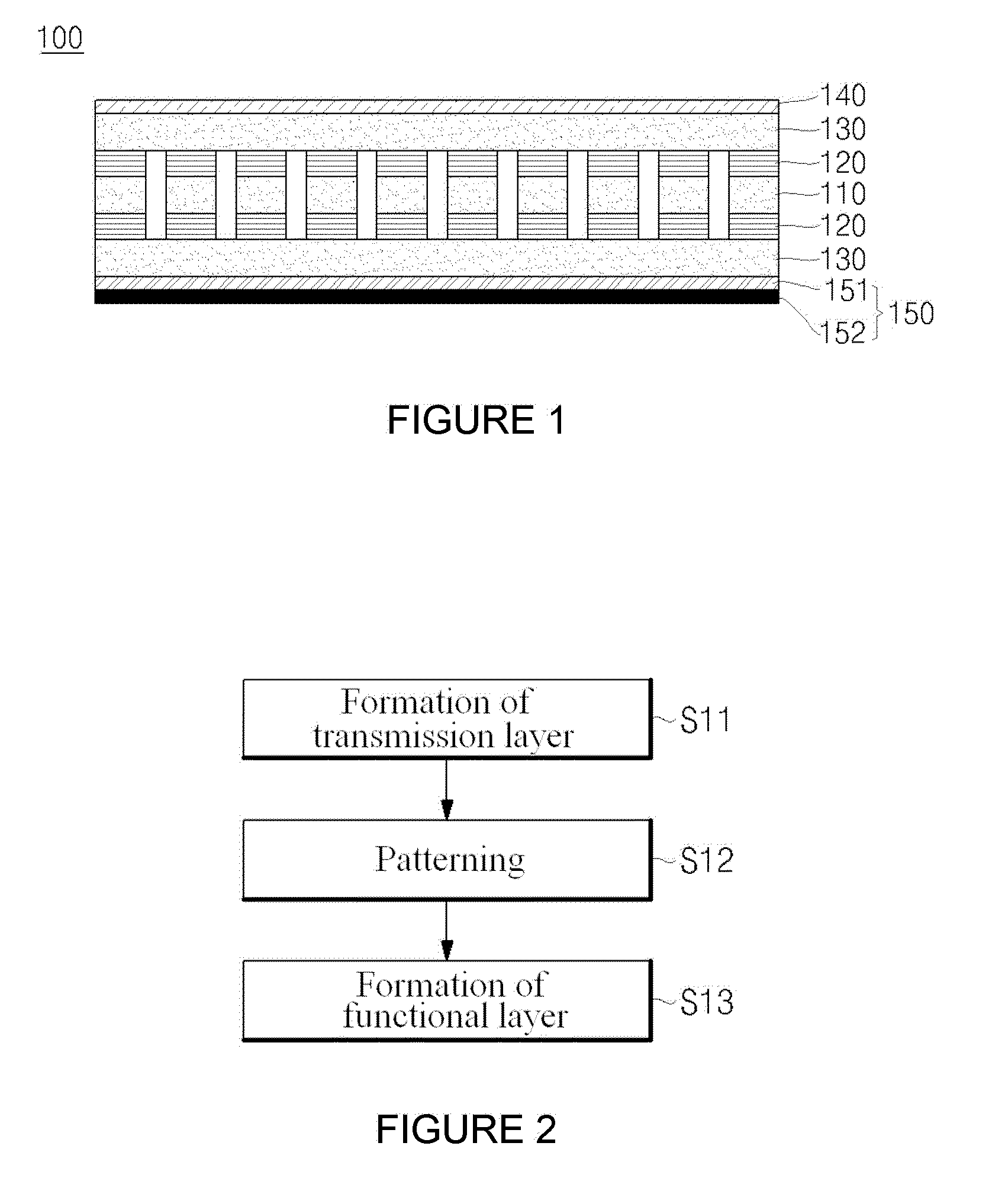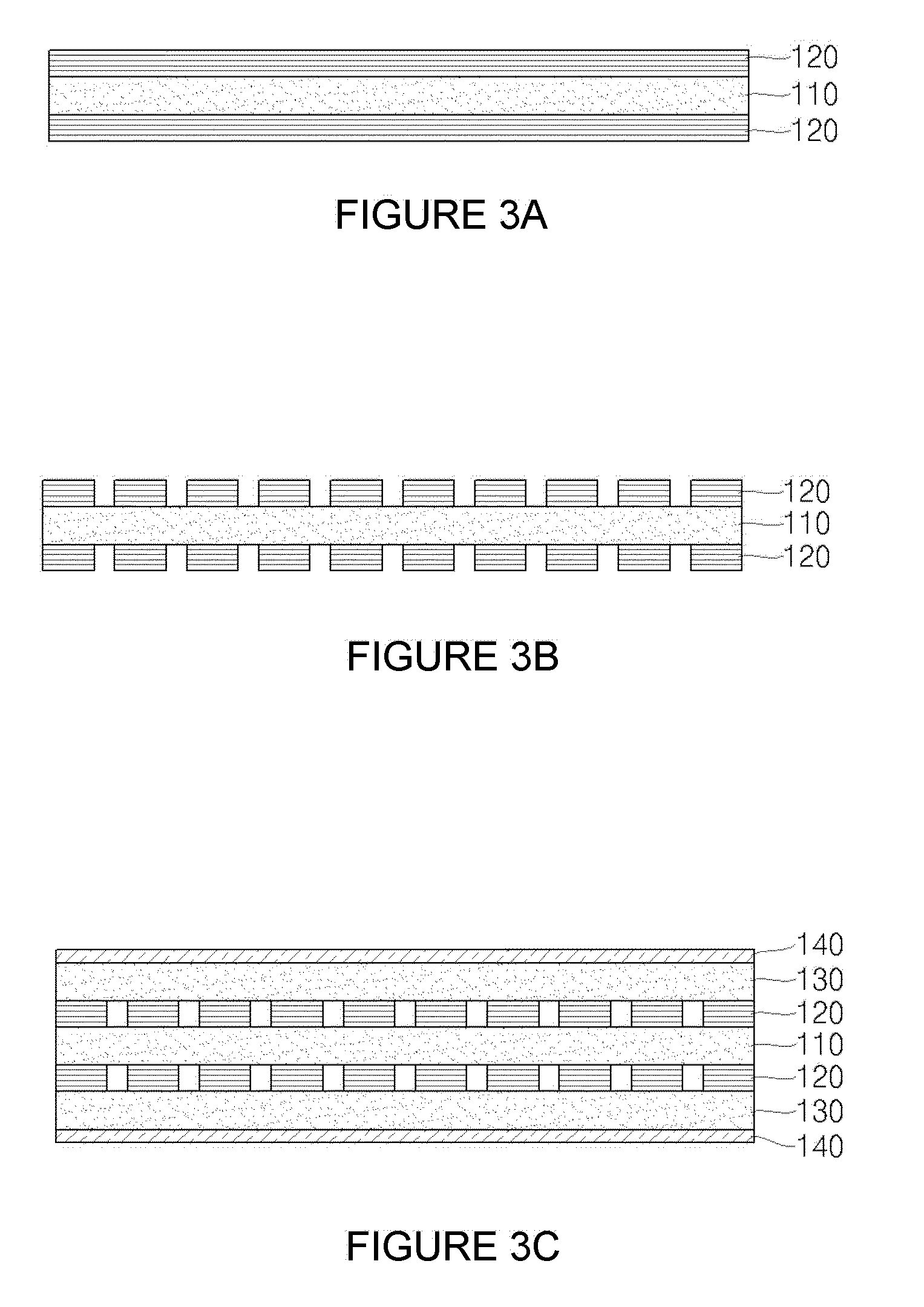Flat transmission wire and fabricating methods thereof
a transmission wire and flat technology, applied in the field of flat transmission wire, can solve the problems of inconvenient installation of conventional round cable wires, poor appearance, negative influence on the environment, etc., and achieve the effect of reducing crosstalk and transmission loss, simple installation, and good appearan
- Summary
- Abstract
- Description
- Claims
- Application Information
AI Technical Summary
Benefits of technology
Problems solved by technology
Method used
Image
Examples
example 1
[0087]1-1. A heat-curable acrylic pressure-sensitive adhesive having an adhesive strength of 60 gf / 25 mm was coated to a thickness of 20 μm on both surfaces of a polyethylene film (thickness=0.05 mm, width=50 mm) by gravure coating, and dried at 100° C. for 10 min to form pressure-sensitive adhesive layers.
[0088]1-2. Copper was adhered to both surfaces of the polyethylene film through the pressure-sensitive adhesive layers to form transmission layers.
[0089]1-3. Each of the transmission layers was slit to form four linear transmission lines. The transmission lines had a width of 5 mm and were spaced apart from each other at intervals of 5 mm.
[0090]1-4. An acrylic adhesive having an adhesive strength of 60 gf / 25 mm was coated to a thickness of 20 μm on one surface of a polyethylene film (thickness=0.05 mm, width=20 mm) by gravure coating, and dried at 100° C. for 30 min to form an adhesive layer. The polyethylene film was adhered to one of the transmission layers including the transmi...
example 2
[0091]2-1. An acrylic adhesive having an adhesive strength of 1,000 gf / 25 mm was coated to a thickness of 20 μm on both surfaces of an insulating film (thickness=0.05 mm, width=50 mm) by gravure coating, and dried at 100° C. for 30 min to form adhesive layers.
[0092]2-2. Two transmission layers having transmission lines, which were produced in the same manner as in 1-1 through 1-3, were adhered to both surfaces of the insulating film through the adhesive layers.
[0093]2-3. A polyethylene film having an adhesive layer formed on one surface thereof, which was produced in the same manner as in 1-4, was adhered to one surface of each of the transmission layers to fabricate a flat transmission wire.
example 3
[0094]3-1. A heat-curable acrylic adhesive having an adhesive strength of 1,000 gf / 25 mm was coated to a thickness of 20 μm on both surfaces of a polyethylene film (thickness=0.05 mm, width=50 mm) by gravure coating, and dried at 100° C. for 10 min to form adhesive layers. Copper was adhered to one surface of the polyethylene film through one of the adhesive layers to form a transmission layer.
[0095]3-2. The polyethylene film having the transmission layer formed on one surface thereof was adhered to one surface of one of two transmission layers of a polyethylene film, which was produced in the same manner as in 1-1 and 1-2.
[0096]3-3. The polypropylene film and the transmission layers were converted in the same manner as in 1-3 to form five transmission lines.
[0097]3-4. A polyethylene film was adhered to one surface of each of the transmission layers including the transmission lines to fabricate a flat transmission wire.
PUM
| Property | Measurement | Unit |
|---|---|---|
| adhesive strength | aaaaa | aaaaa |
| temperature | aaaaa | aaaaa |
| thickness | aaaaa | aaaaa |
Abstract
Description
Claims
Application Information
 Login to View More
Login to View More - R&D
- Intellectual Property
- Life Sciences
- Materials
- Tech Scout
- Unparalleled Data Quality
- Higher Quality Content
- 60% Fewer Hallucinations
Browse by: Latest US Patents, China's latest patents, Technical Efficacy Thesaurus, Application Domain, Technology Topic, Popular Technical Reports.
© 2025 PatSnap. All rights reserved.Legal|Privacy policy|Modern Slavery Act Transparency Statement|Sitemap|About US| Contact US: help@patsnap.com



